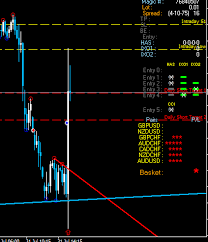
Introduction to Bitcoin
Bitcoin, the world’s first decentralized digital currency, has transformed the way we think about money and financial transactions. Since its inception in 2009, Bitcoin’s significance has expanded beyond just a digital currency; it has become a substantial investment asset and a focal point for discussions around blockchain technology and financial innovation. As of 2023, Bitcoin continues to gain traction among both institutional and retail investors, raising questions about its future and the potential implications for the global financial system.
Recent Trends in Bitcoin
The Bitcoin market has experienced considerable volatility in 2023. Following its all-time highs in late 2021, Bitcoin saw a series of price corrections but began to stabilize by mid-2023, hovering around the $30,000 mark as of October 2023. Recent reports indicate a surge in Bitcoin adoption across various sectors, including technology companies integrating Bitcoin payments and financial institutions developing Bitcoin-related products.
Moreover, the growing acceptance of Bitcoin as a legitimate asset has led to increased regulatory scrutiny. Countries around the world are looking at how to tax and regulate Bitcoin transactions, which could significantly shape the market landscape going forward. The launch of Bitcoin Exchange-Traded Funds (ETFs) in Canada and discussions around potential ETFs in the U.S. highlight institutional interest that could further drive demand.
Challenges and Opportunities Ahead
Despite its growth, Bitcoin faces substantial challenges. Environmental concerns related to its mining process and criticisms regarding its use in illicit transactions remain prevalent. However, solutions such as the transition to renewable energy sources for mining operations and greater transparency can help mitigate these challenges.
As we look to the future, Bitcoin’s role in hedging against inflation, coupled with its technological advancements, presents a unique opportunity for investors. Analysts predict a continued rise in interest as educational resources expand and more people understand the potential benefits of cryptocurrencies.
Conclusion
Bitcoin is at a critical juncture as it continues to navigate a complex landscape of opportunities and challenges. For investors and stakeholders, understanding these dynamics is essential. The future of Bitcoin will likely be shaped by ongoing regulatory developments, technological innovation, and market acceptance. For those considering investing in Bitcoin, remaining informed and vigilant will be key to navigating its inherent risks and potential rewards.






